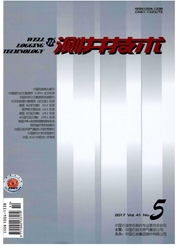

 中文摘要:
中文摘要:
研究了核磁共振测井中横向弛豫时间T2的布点方式,通过对一定范围内T2过量的预布点,再设计合适的适应度函数并使用遗传算法来选择优化的布点方式。该布点方式半自动地确定了布点数和不均匀的布点间隔。数值实验表明这种布点方式对应的系数矩阵的条件数较对数均匀布点减小了多个数量级,特别在布点数为24时减小了约7个数量级。通过截断奇异值分解(TSVD)反演算法验证这种布点方式对一维核磁共振反演谱准确性的改善。这种布点方式理论上可以改进所有使用横向弛豫时间T2预布点的反演算法,有助于解决测量回波信号低信噪比的问题。
 英文摘要:
英文摘要:
This paper studied T2 stationing method in the 1D nuclear magnetic resonance (NMR) well logging. Via excessive pre-assign of T2 in certain range, and genetic algorithm (GA) with appropriate fitness function is used to select optimized stationing, this stationing could semiautomatically determine stationing number and uneven stationing interval, meanwhile numerical experiment indicated that condition number of corresponding coefficient matrix decreased multiple order of magnitude, especially when stationing number is 24, condition number decreased about 7 order of magnitude, furthermore using truncated singular value decomposition (TSVD) verified that this stationing improved the accuracy of inversed Te spectrum. This stationing method can improve all inversion algorithm using pre-assigned T2 in theory, contributing to solving problem of low signal noise ratio of measured echos.
 同期刊论文项目
同期刊论文项目
 同项目期刊论文
同项目期刊论文
 期刊信息
期刊信息
